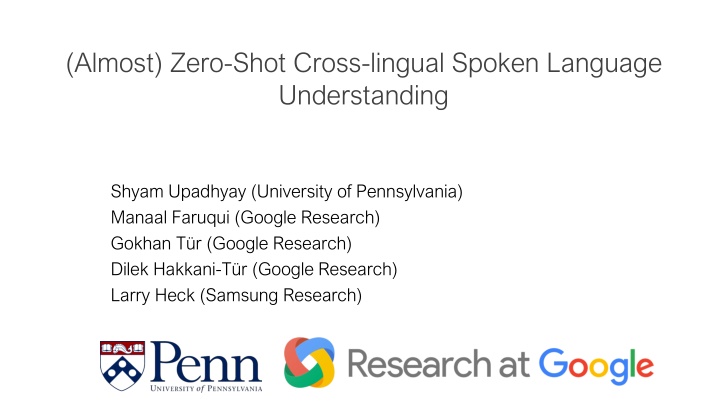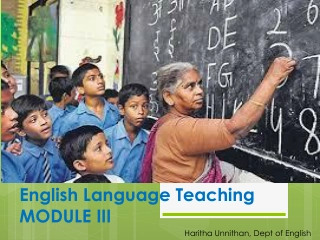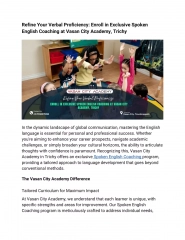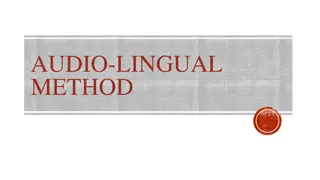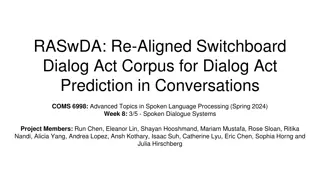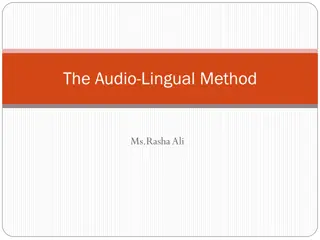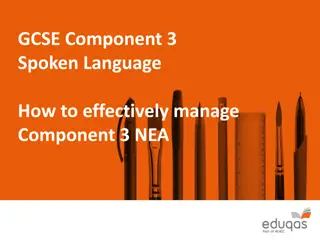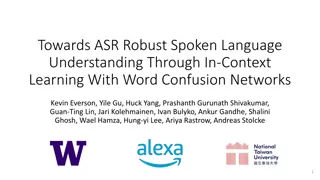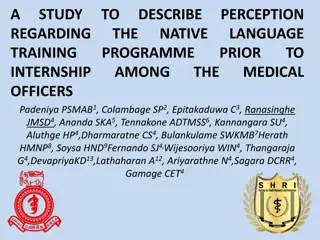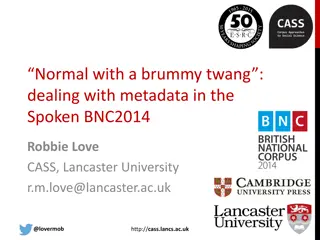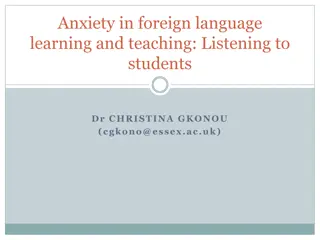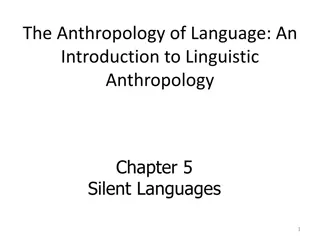Advancements in Cross-lingual Spoken Language Understanding
Significant advancements have been made in cross-lingual spoken language understanding (SLU) to overcome barriers related to labeled data availability in different languages. The development of a SLU model for a new language with minimal supervision and achieving reasonable performance has been a key focus. Innovations in leveraging cross-lingual embeddings, joint training of bilingual SLU models, and the use of neural SLU models have shown promising results in enabling multilingual dialogue systems.
Download Presentation

Please find below an Image/Link to download the presentation.
The content on the website is provided AS IS for your information and personal use only. It may not be sold, licensed, or shared on other websites without obtaining consent from the author.If you encounter any issues during the download, it is possible that the publisher has removed the file from their server.
You are allowed to download the files provided on this website for personal or commercial use, subject to the condition that they are used lawfully. All files are the property of their respective owners.
The content on the website is provided AS IS for your information and personal use only. It may not be sold, licensed, or shared on other websites without obtaining consent from the author.
E N D
Presentation Transcript
(Almost) Zero-Shot Cross-lingual Spoken Language Understanding Shyam Upadhyay (University of Pennsylvania) Manaal Faruqui (Google Research) Gokhan T r (Google Research) Dilek Hakkani-T r (Google Research) Larry Heck (Samsung Research)
Motivation Spoken language understanding (SLU) is a key component of goal-oriented dialogue systems. Labeled data for training a SLU model hard to come by in most languages, creating a language-dependent barrier. Can we develop a SLU model for a new language with little supervision in that language and achieve reasonable performance? 2
Cross-lingual SLU Utt: Slots: find a one way flight from boston to atlanta on wednesday O O B-RT I-RT O O B-FC O B-TC O B-DDN Intent: Flight B-TC B-RT I-RT B-FC B-DDN B-DDN O B-FC O B-TC O O O B-RT O O Intent: Flight Utt: Slots: B, I, O Begin, Inside, Outside RT Round Trip FC, TC From City, To City DDN Depart Day Name 3
Previous Approaches for Cross-lingual SLU Train on Target (Garcia et al. SLT 2012) Hindi SLU MT SLU Model Predictions Hindi Train English Train ? Test on Source (He et al. ICASSP 2013) Hindi Test English SLU Model SLU ? ? MT Predictions Hindi Test English Test Adaptive Test on Source (He et al. ICASSP 2013) Drawbacks All approaches use a MT model. No parameter sharing across languages. 4
Overview of Our Approach English Test ? English Train Bilingual SLU Model SLU Joint Training Predictions Hindi Train (Small) ? Hindi Test Advantages Avoids using a MT model in the pipeline. Can operate on multiple languages simultaneously. Joint training allows parameter sharing across languages. How to enable joint training? 5
Cross-lingual Embeddings = Continuous Approx. of Translation Dictionaries Klementiev et al. (COLING 2012) Faruqui and Dyer (EACL 2014) Sogaard et al. (ACL 2015) Upadhyay et al. (ACL 2016) and many others Vectors in English law English Hindi wednesday law cost country ?? wednesday country ?? market ?? Vectors in Hindi cost peace 6
Neural SLU (Nave Model) Mesnil et al. (TASLP 2015) Hakkani-Tur et al. (Interspeech 2016) Liu and Lane (Interspeech 2016) and many others Softmax Op LSTM Cell : Flight : B-FC O B-TC O O 7
Zero-Shot SLU with Cross-lingual Embeddings SLU Predictions Trained Na ve Model Pre-trained Hindi vectors Pre-trained English vectors Hindi Test Data English Train Data ? 8
Bilingual Model : Flight : B-FC O : B-FC O B-TC O O B-TC B-RT I-RT language indicator milwaukee to denver one way 9
Evaluation Setup Target Languages: Hindi and Turkish. Test utterances and 600 train utterances from English ATIS were translated by native speakers. find a one way flight from boston to atlanta on wednesday Bilingual Mechanical Turk annotators were asked to mark the slot values in the translations. B-DDN O B-FC O B-TC O O O B-RT O O 10
Per Slot Analysis Per Slot F1 with only 100 training examples in the target language Bilingual training helps in learning patterns indicative of rare slot types with much less data. 17
Key Take-Aways A little supervision in the target language goes a long way Both na ve and bilingual model better than zero-shot, train on target and test on source approaches with ~100 examples. Joint training reduces the supervision required to reach a certain performance. 3x reduction in # examples compared to the na ve model. Rare slot types benefit more from joint training than frequent slot types. 18
Whats Next? More Parameter Sharing across Languages Character level modeling (languages with same script) Fully multi-lingual extension of our bi-lingual approach. Multi-lingual SLU models for code-switching. Hindi + English, Spanish + English, French + Tamil Joint modeling with multiple domains (airlines, hotel booking etc.) across multiple languages 19
Thanks! Evaluation data for Hindi and Turkish will be available through LDC. Instructions to obtain the data can be found here github.com/google-research- datasets/dialogue/tree/master/multilingual-atis Questions? 20
